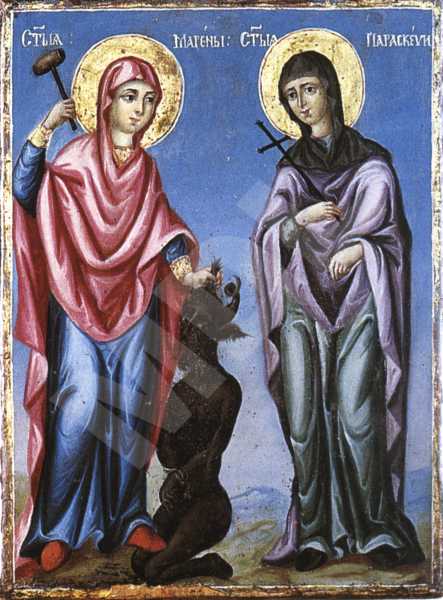St. Marina and St. Parasceve
Type:
Icon
Period:
From
the end of the
18 century
to
the beginning of the
19 century
Toma Vishanov-Molera, born around 1750, painter of icons and murals, founder of the Bansko school of art. He grew up in the family of the clergyman Vishan. Around 1765 he went to Vienna, where he studied painting. It is not known who were his teachers there or when he returned to Bansko. His fellow villagers called him the Moler, Molera(from German Maler ‘painter’), whence the entire family's surname. Under the influence of the European 18th century art Toma Vishanov painted his works in a new manner, unknown until then in Orthodox art. The figures are realistic, vivid, expressive. Toma Vishanov is an innovator in the early period of Bulgarian Renaissance. His ideas on art were not understood and at first were rejected by his contemporaries. His work has not been studied extensively. He died after 1811 in Bansko.
Dimmensions (cm):
29
/ 22.5
/ 2
Location
Country: Bulgaria
Province: Blagoevgrad
Town: Bansko
Church: St. Trinity
Source
Country: Bulgaria
Province: Blagoevgrad
Town: Bansko
Church: St. Trinity
Description
The iconography is the specific one for this icon. The composition is an untraditional one. The two saints are portrayed in full length, dressed in monastic garments. Saint Parasceve is holding in her right hand a long cross and is looking at Saint Marina who is holding in her lifted right a hammer, and with her left hand - the horns of the devil. The personification of the evil is painted squatting between the to saints. Besides that, Saint Marina has her right foot on the figure of the devil, who is awaiting his punishment. The seen is set against the background of a low hilly landscape, the tone gradating upwards into ultramarine. The graphic line-up and the colouring, as well as the vivid expressions of the face of the figures, painted in the composition, speak for a work of the founder of the Bansko school of art.
Iconographical technique: Combined
Used has been the "wet into wet" method in the carnations. The varnish cover is applied in a thin layer. The gilding on the aureoles and on the enclosing frame is with gold-leaf.
Base material: Wood
The icon's base is a one-piece softwood panel, with two inserted beams. The ground coat is of plaster, laid thinly.
State, restoration traces and comments
Then are damages along the enclosing frame, mostly in its lower part, as well as a number of mechanical damages in some places of the painting layer. There are no traces of any previous restorative intervention.


